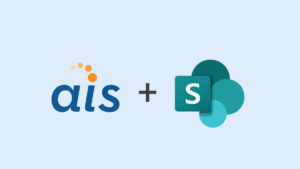 Like the rest of the AIS team, I’d thought I’d share one of the most interesting sessions I attended during SPC12. It was called SharePoint Center of Excellence: Why you need one. Those IT Pro and Dev guys/gals might have missed this one because it was in the basement (politely known as the conference’s Business Section), but I found it extremely valuable.
Like the rest of the AIS team, I’d thought I’d share one of the most interesting sessions I attended during SPC12. It was called SharePoint Center of Excellence: Why you need one. Those IT Pro and Dev guys/gals might have missed this one because it was in the basement (politely known as the conference’s Business Section), but I found it extremely valuable.
The session was run by Andrew Woodward from App 21 on the usefulness of (and strategies for) successfully operating a Center of Excellence within an organization. For those that have never had the pleasure of actively participating in the evangelizing/educating/promoting of technology in reshaping workforce processes, Centers of Excellence serve as visible and real recognition by organizational leadership on the commitment of the investment. In other words, they help put weight behind the words.
This session was of particular interest to me because some of our customers maintain a COE around SharePoint. I went for tips and tricks, but also for a reinforcement of the principles of such a group.
Mr. Woodward made a lot of excellent points and clearly had extensive experience. He brought levity to an admittedly dry topic and demonstrated techniques for deploying meaningful solutions on the platform. He referenced excellent change management models (Kapitola Pathway) and workflow adaptation as well as sound fundamentals like an emphasis on business goals and background diversity amongst COE members. He described his tactical approach and utilization of Agile Kanban in deploying departmental solutions maximizing OOTB components.
The part that struck me was how difficult executing many of the seemingly commonsense principles he outlined would be within the federal sector. For example, one of the critical first steps Andy talked about was establishing the COE as the single point of contact for all things SharePoint. In the federal sector, the organizational structure and reporting hierarchy makes achieving even this simple goal a daunting challenge. With a labyrinth of mission spaces, establishing a single point of contact for “all things SharePoint” would be very difficult especially relative to procurement of third party tools, training, and contractors or as Andy collectively termed it, suppliers.
Another commonsense point made by Andy was that the COE should live outside of IT. Makes perfect sense right? Establishing solution champions across the enterprise, preaching the virtues of the platform, while establishing common messaging, requires an understanding of business objectives, not technical. So, who pays for that? The government has a vast array of services and is not driven by the bottom line. Establishing an equitable cost model across a multitude of groups would not be easy within a commercial endeavor, let alone one where there is rarely a quantifiable ROI.
And don’t forget, he who funds it, runs it. Simply adding the COE as a line item for OCIO would lead to the opposite result.
[pullquote]“The more comprehensive it is documented the less it will be understood.”[/pullquote]Last was a topic near and dear to me: governance. Probably the most profound statement I took away this week was, “The more comprehensive it is documented the less it will be understood.” I love that. Now if we can just get the government to apply that principle to the IRS tax code or the Federal Acquisition Regulation (FAR). The nature of the business objectives (i.e. the vastness of services provided), as well as regulatory requirements, unfortunately, result in comprehensive documentation in spite of the efforts to keep it simple.
Again, this was a very informative session and I learned a lot. I certainly achieved my mission, tips/tricks, and reinforcement of ideals, but I also gained a deeper respect for many of my customers.






